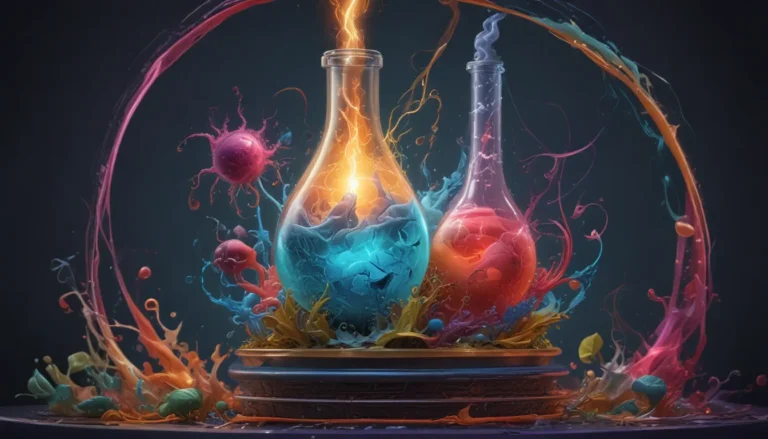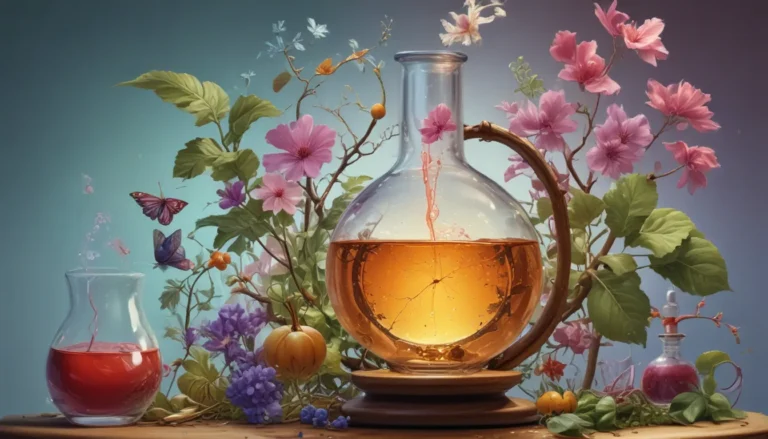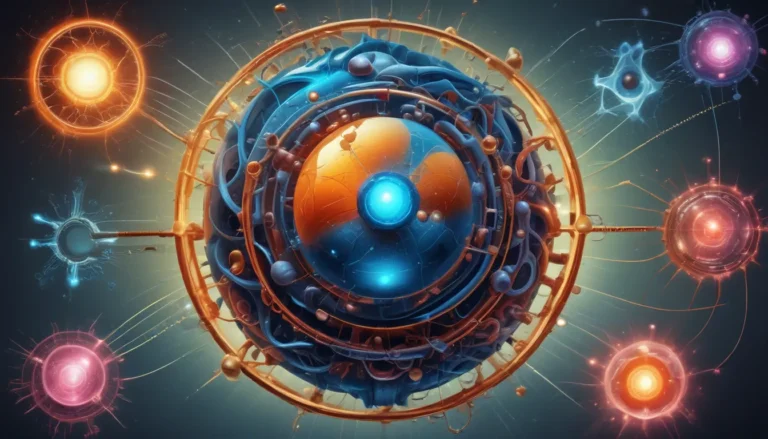A Note About Images: The images used in our articles are for illustration purposes only and may not exactly match the content. They are meant to engage readers, but the text should be relied upon for accurate information.
In the vast realm of chemistry and biochemistry, competitive inhibition stands out as a captivating concept. This phenomenon revolves around a molecule, known as the inhibitor, that vies for the active site of an enzyme, impeding or halting its activity by competing with the substrate. Competitive inhibition plays a pivotal role in numerous biochemical processes and holds great significance in domains like pharmacology and drug design. By delving into the ten extraordinary facts about competitive inhibition, we can enrich our comprehension of this vital concept, from its influence on enzyme kinetics to its involvement in drug resistance. So, let’s embark on an enlightening journey into the remarkable world of competitive inhibition!
Unveiling the Marvels of Competitive Inhibition
Competitive inhibition, a widely observed phenomenon in biochemistry and enzymology, occurs when an inhibitor competes with the natural substrate for the enzyme’s active site. This competition impedes the substrate from binding to the enzyme, thereby obstructing its activity and initiating a cascade of effects.
The Impact on Enzymatic Functions
When a competitive inhibitor binds to an enzyme’s active site, it hinders the substrate from binding, consequently diminishing or halting the enzymatic reaction. This inhibition can significantly influence various biological processes and pathways, spanning from metabolism to cell signaling.
The Intriguing Structural Resemblance
A fascinating facet of competitive inhibition lies in the structural similarity between the inhibitor and the natural substrate. This resemblance enables inhibitors to bind to the enzyme’s active site and compete for the same binding sites, embodying a complex interplay of molecular interactions.
The Significance of Affinity
The strength of competitive inhibition hinges on the inhibitor’s affinity towards the enzyme’s active site. Inhibitors with higher affinity can outcompete the substrate more effectively, leading to a robust inhibition of enzyme activity and exerting a profound impact on biochemical processes.
Embracing Reversibility
Unlike other forms of enzyme inhibition, competitive inhibition often showcases reversibility. Upon the removal or dilution of the inhibitor, the enzyme can restore its normal activity by binding to the substrate without facing competition, heralding a dynamic interplay within enzymatic reactions.
Overcoming Inhibition Through Substrate Concentration
A stratagem to circumvent competitive inhibition involves elevating the substrate concentration. By supplying a higher concentration of the natural substrate, the likelihood of it binding to the enzyme and overpowering the inhibitor amplifies, facilitating the resumption of enzymatic activities.
Regulating Enzymatic Activities
In specific scenarios, competitive inhibition assumes a pivotal role in regulating enzyme activities. By introducing specific inhibitors to compete with substrates, cells can finely modulate the activity of crucial enzymes in response to shifting conditions or metabolic demands, orchestrating a delicate balance within biological processes.
Pharmacological Exploitation
Harnessing the understanding of competitive inhibition has paved the way for pharmacological breakthroughs. Drugs designed as competitive inhibitors can selectively target particular enzymes implicated in disease pathways, offering a promising avenue for therapeutic intervention and novel treatment strategies.
Catalyzing Drug Discovery
Exploring competitive inhibition can yield valuable insights into enzyme-substrate interactions, illuminating the path towards drug discovery and the development of novel molecules that serve as competitive inhibitors for specific enzymes. This avenue holds immense potential for innovative therapeutic approaches.
A Beacon of Research
Competitive inhibition remains a vibrant field of research, with scientists continually exploring new inhibitors, delving into the structures of enzyme-inhibitor complexes, and unraveling the implications of competitive inhibition in diverse biological phenomena. This ongoing pursuit promises a tapestry of new discoveries and nuanced insights.
Unveiling the Spectrum of Competitive Inhibition
In essence, competitive inhibition stands as a captivating facet of enzymology that intricately weaves its influence through various biochemical processes. The extraordinary facts surrounding competitive inhibition shed light on the labyrinthine mechanisms governing enzyme functions and regulation. From the concept of reversible binding to the ramifications on enzyme kinetics and the potential realms of drug development, competitive inhibition offers invaluable insights into the multifaceted world of enzymatic reactions.
Understanding the dynamics of competitive inhibition not only enriches our fundamental knowledge of biochemistry but also unlocks the potential for practical applications. By manipulating competitive inhibitors, scientists can devise strategies to modulate enzyme activities, fostering the development of groundbreaking therapies and treatments for diverse diseases and disorders. As the research in competitive inhibition propels forward, we anticipate the discovery of even more extraordinary facts and a deeper exploration into the intricacies of enzymatic regulation, promising a horizon of innovative discoveries and advancements in biochemistry.
FAQs: Unraveling Queries on Competitive Inhibition
-
What characterizes competitive inhibition?
Competitive inhibition entails a molecule, the competitive inhibitor, challenging the natural substrate for binding to the enzyme’s active site, hindering the enzymatic reaction’s pace. -
How does competitive inhibition influence enzyme kinetics?
Competitive inhibition elevates the apparent KM (Michaelis constant) of the enzyme, necessitating higher substrate concentrations for reaching half of its maximal velocity. Nevertheless, it does not impact the maximum velocity (Vmax) of the reaction. -
Is competitive inhibition reversible?
Yes, competitive inhibition exhibits reversibility. The competitive inhibitor can detach from the enzyme, enabling the substrate to bind and recommence the enzymatic reaction, rendering it a viable target for drug development. -
What practical applications are associated with competitive inhibition?
Competitive inhibitors have found utility in pharmaceutical research for crafting drugs that selectively target specific enzymes. By formulating competitive inhibitors binding to disease-associated enzymes, it becomes feasible to regulate their activity and potentially address diverse maladies. -
Can we discern instances of competitive inhibition in everyday scenarios?
Certainly, numerous common drugs function as competitive inhibitors. For instance, statins employed to lower cholesterol levels act by competitively inhibiting the enzyme HMG-CoA reductase, pivotal in cholesterol synthesis.
Enzyme kinetics harbor a plethora of captivating aspects, with noncompetitive inhibition serving as another compelling phenomenon that diverges in its impact on enzymes by binding to sites beyond the active site. The overarching realm of enzyme inhibition plays an indispensable role in regulating biochemical processes, thus extending its ramifications across various domains. A deeper exploration into these realms promises a nuanced understanding of enzymes and their intricate interplay with inhibitors, nurturing a profound comprehension of these enigmatic biochemical entities.
A Note on Reliability
Our dedication to delivering credible and enriching content constitutes the cornerstone of our endeavors. Each fact emanating from our platform is a testament to real users’ contributions, encapsulating a diverse array of insights and information. Upholding unwavering commitment to accuracy and reliability, our diligent editors meticulously review each submission to ensure the utmost standards of credibility and authenticity. Trust in our unyielding dedication to quality and authenticity as you embark on a journey of exploration and enlightenment.






